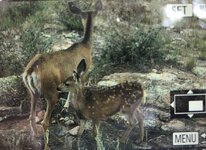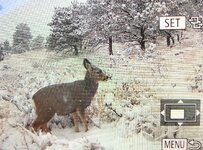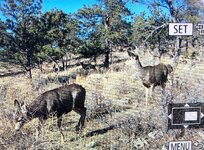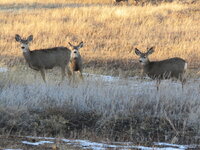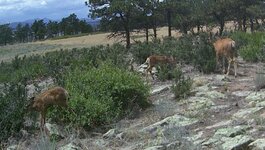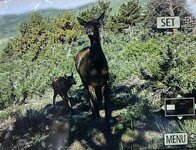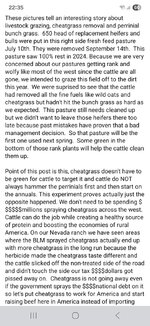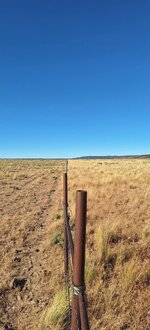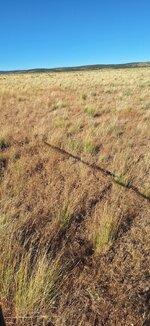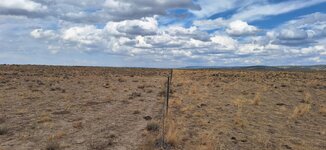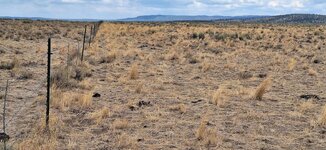Drilling cheatgrass infested areas:
Chris, I agree 100% with your post above. Most of the properties where I work have decent remant native species and native seed in the soil. It's an entirely different ball game in areas where dense cheatgrass has been around for a long time and natives no longer exist. It's pretty much like starting from square 1 in those situations.
From my experience, it seems like broadleaf native species tend to be more resilient and annual grass species are super sensitive/susceptible to low rates of Rejuvra. With that said, I usually wait at least 2 growing seasons before drilling perennial grass species into Rejuvra. I've had great results in our area drilling native grass after that time. I'm not sure if that same time interval holds true in other areas with different precipitation and soils.
We have drilled a triticale cover crop into Rejuvra with decent results. We drilled 1 year after treatment. Triticale has pretty big seed and is capable of emerging from fairly deep in the soil profile. As you mentioned above, Rejuvra stays within the first couple of centimeters in the soil. We've drilled triticale fairly deep. Tricale would offer a little more time for the Rejuvra to break down before drilling. There may be other cover crop species that may work in your area.
Your activated charcoal idea may also work? Unfortunately, I haven't tried it yet.
Another option we've used several times is to use matrix or glyphosate dormant treatments until drilled grass and other species are established. Once happy with the drilled native species stand it's possible to spray Rejuvra. It's a matter of timing when spraying dormant timings using these 2 herbicides. Plateau may also be an option but doesn't seem to work very well in our area on cheatgrass.
A lot of areas we spray it's too rough and rocky to drill. We still have remnant native species present in low densities. Some of these areas may have a history of disturbance or other factors. I often wait until year 2 or 3 to broadcast seed different desired native seed. Some native annual and perennial broadleaf specie's seed tend to come right through Rejuvra the first year after treatment. It's possible to seed these the same year Rejuvra is sprayed. It may be possible to figure out particular native species in your area that work. Obviously, it would be wise to try some of these things on a small-scale at first. I am constantly stripping mature native seed off native plants in the late summer through winter and spreading them in these areas that tend to take more time to respond or recover. I have compiled a lot of data over the years to figure some of these strategies out.
Hopefully some of this helps. It gets a little complicated in a hurry if there aren't remnant desirable species that still exist in cheatgrass. I'm always amazed at how long some of those native species' seed stays dormant in the soil waiting for the right conditions to emerge.
Chris, I agree 100% with your post above. Most of the properties where I work have decent remant native species and native seed in the soil. It's an entirely different ball game in areas where dense cheatgrass has been around for a long time and natives no longer exist. It's pretty much like starting from square 1 in those situations.
From my experience, it seems like broadleaf native species tend to be more resilient and annual grass species are super sensitive/susceptible to low rates of Rejuvra. With that said, I usually wait at least 2 growing seasons before drilling perennial grass species into Rejuvra. I've had great results in our area drilling native grass after that time. I'm not sure if that same time interval holds true in other areas with different precipitation and soils.
We have drilled a triticale cover crop into Rejuvra with decent results. We drilled 1 year after treatment. Triticale has pretty big seed and is capable of emerging from fairly deep in the soil profile. As you mentioned above, Rejuvra stays within the first couple of centimeters in the soil. We've drilled triticale fairly deep. Tricale would offer a little more time for the Rejuvra to break down before drilling. There may be other cover crop species that may work in your area.
Your activated charcoal idea may also work? Unfortunately, I haven't tried it yet.
Another option we've used several times is to use matrix or glyphosate dormant treatments until drilled grass and other species are established. Once happy with the drilled native species stand it's possible to spray Rejuvra. It's a matter of timing when spraying dormant timings using these 2 herbicides. Plateau may also be an option but doesn't seem to work very well in our area on cheatgrass.
A lot of areas we spray it's too rough and rocky to drill. We still have remnant native species present in low densities. Some of these areas may have a history of disturbance or other factors. I often wait until year 2 or 3 to broadcast seed different desired native seed. Some native annual and perennial broadleaf specie's seed tend to come right through Rejuvra the first year after treatment. It's possible to seed these the same year Rejuvra is sprayed. It may be possible to figure out particular native species in your area that work. Obviously, it would be wise to try some of these things on a small-scale at first. I am constantly stripping mature native seed off native plants in the late summer through winter and spreading them in these areas that tend to take more time to respond or recover. I have compiled a lot of data over the years to figure some of these strategies out.
Hopefully some of this helps. It gets a little complicated in a hurry if there aren't remnant desirable species that still exist in cheatgrass. I'm always amazed at how long some of those native species' seed stays dormant in the soil waiting for the right conditions to emerge.

